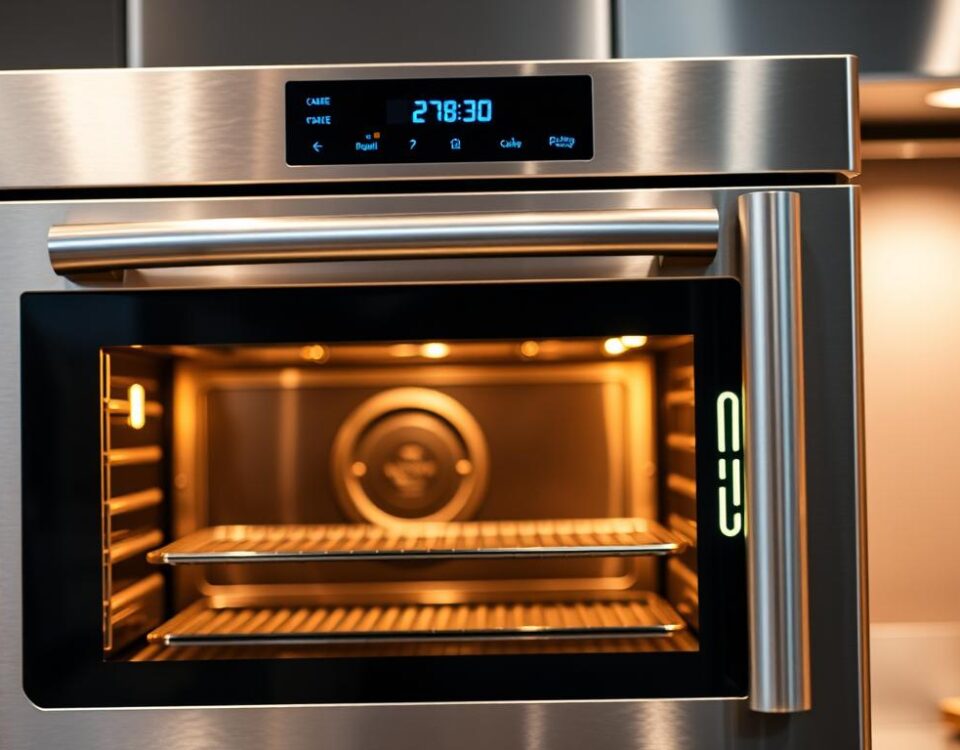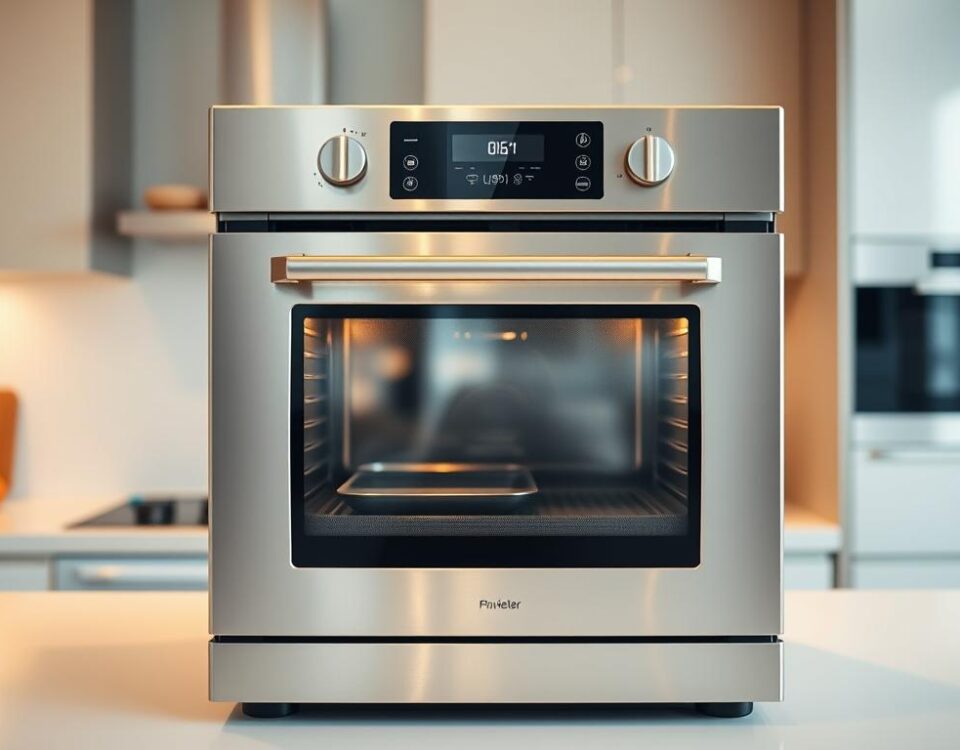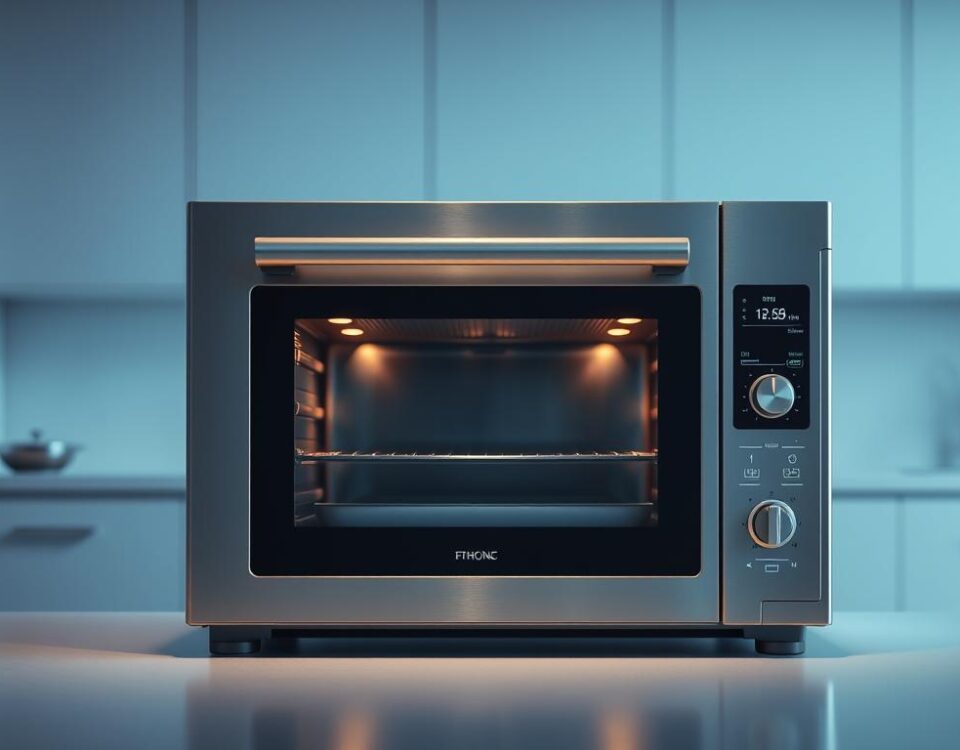
How the Ghost Kitchen Business Model Works—and Why It’s Booming in 2025
June 22, 2025
Restaurant Kitchen Automation: 6 Smart Tools That Cut Labor and Boost Profit
June 23, 2025As I stand in my kitchen, surrounded by the tools of my trade, I’m reminded of the impact that our cooking habits have on the environment. The truth is, traditional kitchen tools can be harmful, not just to the planet, but also to our health. Did you know that some kitchen utensils contain chemicals that can leach into our food?
I’ve tested numerous sustainable kitchen products and curated a list of my favorites that are both functional and gentle on the environment. By making the switch to eco-friendly kitchen options, we can significantly reduce our carbon footprint and create a healthier cooking space. What if you could cook with confidence, knowing that your kitchen tools are not only effective but also sustainable?
Key Takeaways
- Top eco-friendly kitchen tools that are both sustainable and functional
- The benefits of switching to eco-friendly kitchen options for your health and the environment
- A curated list of sustainable kitchen products that have been tested for durability and performance
- Tips for transitioning your kitchen to more sustainable options without sacrificing quality
- Recommendations for eco-friendly kitchen tools that fit every budget
Why Your Kitchen Tools Matter for Health and Environment
Kitchen tools are more than just utensils; they play a vital role in our health and the planet’s well-being. The materials and manufacturing processes behind these tools can have far-reaching consequences, from the health impacts of toxic materials to the environmental footprint of production and disposal.
The Hidden Dangers in Conventional Kitchen Tools
Conventional kitchen tools, especially those with non-stick coatings like Teflon, can release toxic fumes when scratched or damaged. These fumes not only harm humans and animals but also contribute to air pollution. Moreover, the production of these tools often involves intensive energy use and non-renewable resources, exacerbating their environmental impact.
Toxic Materials: Many traditional kitchen tools contain materials that are hazardous to our health. For instance, some plastics can leach chemicals into food, while non-stick coatings can degrade over time, releasing harmful substances.
| Material | Health Impact | Environmental Impact |
|---|---|---|
| Non-Stick Coatings | Toxic fumes when heated | Contributes to air pollution |
| Certain Plastics | Chemical leaching into food | Contributes to microplastic pollution |
Environmental Impact of Traditional Cookware
The environmental footprint of traditional cookware is substantial, from the extraction of raw materials to the disposal of worn-out products. Many conventional cookware items end up in landfills, where they can take centuries to decompose.
The production process for traditional cookware often involves significant energy consumption and the use of non-renewable resources, further increasing its carbon footprint. By understanding these impacts, we can begin to make more informed choices about the kitchen tools we use.
Ditching Toxic Non-Stick Cookware
Ditching toxic non-stick cookware is a crucial step in creating a healthier kitchen environment. Non-stick coatings have been a convenience for many home cooks, but the risks associated with their use have become increasingly apparent.
The Problem with PFAS and “Forever Chemicals”
Non-stick cookware often contains PFAS (Per- and Polyfluoroalkyl Substances), also known as “forever chemicals” due to their persistence in the environment. These chemicals have been linked to various health issues, including cancer and reproductive problems. When non-stick cookware is heated, these chemicals can leach into food, posing a significant health risk. The production and disposal of non-stick cookware also contribute to environmental pollution, contaminating soil and water sources.
To avoid these risks, it’s essential to choose cookware made from safer materials like stainless steel, cast iron, or ceramic. These alternatives may require more maintenance, but they are significantly healthier and more eco-friendly in the long run.

How to Safely Dispose of Old Non-Stick Items
Disposing of old non-stick cookware requires careful consideration to minimize environmental impact. First, check your city’s recycling guidelines or call its recycling hotline to determine the best way to dispose of your non-stick items. In most cases, old non-stick pots and pans cannot be placed in your curbside recycling bin.
Instead, you’ll likely need to take them to a depot that accepts scrap metal. Some communities have special collection events for hazardous waste, which may include non-stick cookware. If you’re unsure about the proper disposal method, contacting your local waste management agency can provide guidance on the need for special handling.
| Disposal Method | Non-Stick Cookware | Other Kitchen Items |
|---|---|---|
| Curbside Recycling | No | Yes (check local guidelines for plastic and other materials) |
| Scrap Metal Recycling | Yes | Yes (for metal items) |
| Special Collection Events | Yes (for hazardous waste) | Yes (for specific items like electronics or batteries) |
By responsibly disposing of your old non-stick cookware and choosing safer alternatives, you can significantly reduce your exposure to toxic chemicals and contribute to a healthier environment.
Sustainable Materials for Eco-Friendly Chef Tools
When it comes to equipping your kitchen with eco-friendly tools, the material matters. The choice of materials for kitchen utensils and cookware significantly impacts both our health and the environment. In this section, we’ll explore four key sustainable materials that are changing the game for eco-conscious cooks.
Stainless Steel: Durable and Recyclable
Stainless steel is a popular choice for eco-friendly kitchen tools due to its durability and recyclability. It resists corrosion, is easy to clean, and can withstand high temperatures. Many stainless steel products are made from recycled materials, making them an excellent choice for those looking to reduce their environmental impact. When selecting stainless steel tools, look for products made from high-quality, food-grade materials to ensure they remain safe and functional over time.
Wood and Bamboo: Renewable Resources
Wood and bamboo are renewable resources that bring warmth and a natural touch to the kitchen. These materials are biodegradable and require less energy to produce than many synthetic alternatives. Bamboo, in particular, is highly sustainable due to its fast growth rate and ability to regenerate quickly. When choosing wooden or bamboo utensils, opt for sustainably sourced products to ensure you’re supporting responsible forestry practices.
Silicone: A Better Alternative to Plastic
Silicone is a versatile material that’s becoming increasingly popular in eco-friendly kitchen tools. It’s flexible, heat-resistant, and non-stick, making it an excellent alternative to traditional plastic utensils. High-quality silicone products are durable and can withstand extreme temperatures, from freezer to oven. Look for silicone products that are BPA-free and made from food-grade materials to ensure safety and performance.
Glass and Ceramic: Non-Reactive and Long-Lasting
Glass and ceramic materials are gaining popularity in kitchenware due to their non-reactive nature and durability. Glass is versatile, easy to use, and won’t absorb flavors or odors. Ceramic cookware is made from eco-friendly materials, is free from harmful chemicals, and offers a non-stick surface without the risks associated with traditional non-stick coatings. Both materials are ideal for cooking and storing food, preserving the pure taste of your meals.
| Material | Durability | Non-Reactive | Recyclable |
|---|---|---|---|
| Stainless Steel | High | Yes | Yes |
| Wood/Bamboo | Medium | Yes | No |
| Silicone | High | Yes | No |
| Glass/Ceramic | High | Yes | Yes |
By understanding the benefits of these sustainable materials, you can make informed choices about the tools you bring into your kitchen. Whether you opt for the durability of stainless steel, the renewability of wood and bamboo, the flexibility of silicone, or the non-reactive nature of glass and ceramic, you’re taking a step towards a more eco-friendly cooking experience.
Top Eco-Friendly Chef Tools for 2025
Eco-friendly chef tools are not just a trend; they’re a necessity for a healthier kitchen in 2025. As we continue to navigate the world of sustainable living, our kitchens are at the forefront of this change. In this section, we’ll explore the top eco-friendly chef tools that are making a difference.
Sustainable Cutting Boards
When it comes to sustainable cutting boards, the materials matter. Look for cutting boards made from renewable resources like bamboo or maple wood. These materials are not only durable but also gentler on your knives. For a high-quality option, consider brands that prioritize sustainability.

Non-Toxic Cooking Utensils
Cooking utensils are another area where eco-friendly choices can make a significant impact. Opt for utensils made from stainless steel, silicone, or bamboo. These materials are not only non-toxic but also durable and easy to clean. Silicone utensils, in particular, offer flexibility and heat resistance.
![]()
Eco-Friendly Cookware Options
Eco-friendly cookware is all about materials that are safe for cooking and the environment. Cast iron, stainless steel, and ceramic cookware are excellent choices. They are free from toxic chemicals like PFAS and PFOA, ensuring that your food remains healthy and safe.

Sustainable Food Storage Solutions
Sustainable food storage is crucial for reducing waste and keeping food fresh. Consider using glass containers with silicone or stainless steel lids. These are versatile, going from freezer to oven, and eliminate the need for plastic storage containers. Additionally, beeswax wraps are a great alternative to plastic wrap, offering reusability and natural antibacterial properties.
Other innovative solutions include silicone storage bags that provide the flexibility of plastic without the environmental impact. Repurposing glass jars and bottles is also a creative way to reduce waste and store food.
![]()
By incorporating these eco-friendly chef tools into your kitchen, you’ll not only be reducing your environmental footprint but also ensuring a healthier cooking environment. From sustainable cutting boards to eco-friendly cookware and storage solutions, every choice counts towards a more sustainable future.
Making Traditional Cookware Work Without Chemicals
By mastering a few simple techniques, you can make traditional cookware work without relying on chemical coatings. This approach not only ensures a healthier cooking environment but also enhances the durability of your cookware.
Seasoning and Maintaining Cast Iron and Carbon Steel
To get the most out of your cast iron and carbon steel cookware, proper seasoning and maintenance are crucial. Seasoning creates a non-stick surface by forming a layer of polymerized oil on the metal. To season your cookware, apply a thin layer of cooking oil and heat it in the oven at 350°F (175°C) for an hour. Repeat this process several times to build up a robust seasoning.
Maintenance involves avoiding harsh chemicals and not putting your cast iron or carbon steel cookware in the dishwasher. After use, simply wipe it clean with a paper towel and apply a thin layer of oil to prevent rust.
Cooking Techniques for Stainless Steel
Cooking with stainless steel requires some specific techniques to prevent food from sticking. First, preheat the pan until it reaches medium to medium-high heat. Then, add a sufficient amount of oil and let it heat up before adding food. This creates a natural barrier between the food and the metal surface.
To prevent sticking, it’s also important to control the heat. Stainless steel conducts heat quickly, so adjust the temperature as needed. If food starts to stick, lower the heat and deglaze the pan with a small amount of liquid, such as broth or water, while stirring to loosen the stuck bits.
| Cooking Technique | Description | Benefit |
|---|---|---|
| Preheating | Heat the pan before adding oil or food | Prevents food from sticking |
| Using sufficient oil | Add enough oil to coat the pan | Creates a non-stick surface |
| Controlling heat | Adjust temperature to prevent sticking | Ensures even cooking |
| Deglazing | Add liquid to loosen stuck food | Eases cleaning and creates pan sauces |

By applying these techniques, you can enjoy cooking with stainless steel without the need for chemical non-stick coatings. Whether you’re cooking delicate foods like eggs or heartier dishes like steak, stainless steel cookware can perform exceptionally well with the right approach.
Caring for Your Eco-Friendly Kitchen Tools
Maintaining your eco-friendly kitchen tools is a simple yet effective way to reduce waste and support sustainability in your kitchen. By choosing durable, long-lasting items and properly caring for them, you can significantly extend their usefulness and get the most value from your eco-friendly investments.

Wood and Bamboo Maintenance
Wood and bamboo kitchen tools, such as cutting boards and utensils, require special care to maintain their quality. To keep them in good condition, regularly oil them with a food-safe oil, such as mineral oil or beeswax. This helps prevent cracking and warping. Avoid exposing wood and bamboo tools to extreme temperatures or moisture, as this can cause damage.
Extending the Life of Your Sustainable Tools
To maximize the lifespan of your eco-friendly kitchen tools, it’s essential to use them appropriately and maintain them regularly. Here are some tips to help you extend the life of your sustainable tools:
| Tool Material | Care Tips | Benefits |
|---|---|---|
| Silicone | Clean with soap and water, dry thoroughly | Durable, flexible, and easy to clean |
| Stainless Steel | Avoid abrasive cleaners, dry to prevent rust | Resistant to corrosion, long-lasting |
| Wood and Bamboo | Oil regularly, avoid extreme temperatures | Sustainable, durable, and aesthetically pleasing |
By following these care tips and using your eco-friendly kitchen tools as intended, you can enjoy a more sustainable kitchen and reduce waste.
Conclusion: Building Your Sustainable Kitchen One Tool at a Time
The path to an eco-friendly kitchen is about making conscious choices. By choosing durable, long-lasting tools and utensils, you can significantly reduce your environmental footprint. Consider buying second-hand cookware and properly maintaining your kitchen essentials to extend their usefulness.
Repairing or repurposing items can also make a significant difference. Many kitchen tools can be fixed with a new part, and items that are beyond repair can be recycled or repurposed. Donating unused but still functional items to local shelters or thrift shops is another way to make your kitchen more sustainable.
By making these small changes, you’ll be creating a healthier kitchen that benefits both your family and the planet. Every eco-friendly choice you make is a step towards a more sustainable future.
FAQ
What are the benefits of using stainless steel kitchen utensils?
Stainless steel utensils are durable, recyclable, and resistant to corrosion, making them a great choice for those looking to reduce their environmental footprint. I find that they also distribute heat evenly, which is perfect for cooking techniques that require precision.
How do I maintain my wooden cutting board to prevent cracking?
To keep your wooden cutting board in good condition, I recommend regularly applying mineral oil or beeswax to prevent drying out and cracking. This simple maintenance step can extend the life of your cutting board and keep it looking its best.
Are silicone utensils safe for cooking at high temperatures?
Yes, most silicone utensils are heat-resistant and safe for use at high temperatures. However, it’s always a good idea to check the manufacturer’s guidelines to ensure you’re using them within a safe temperature range.
Can I use glass containers for storing hot food?
Yes, glass containers are a great option for storing hot food. They’re non-reactive, so you don’t have to worry about chemicals leaching into your food, and they’re also easy to clean and maintain.
How do I properly dispose of old non-stick cookware?
To safely dispose of old non-stick cookware, I recommend checking with local recycling centers to see if they accept non-stick materials. If not, you can also consider donating still-usable cookware or wrapping it securely and taking it to a hazardous waste collection facility.
What are some alternatives to plastic food storage containers?
Some great alternatives to plastic food storage containers include stainless steel or glass containers. These options are not only more sustainable but also help keep your food fresh for longer.



